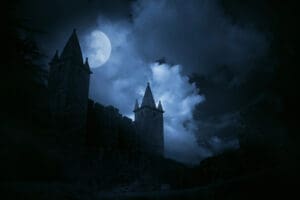Significant Mosques in El Moez Street, Egypt
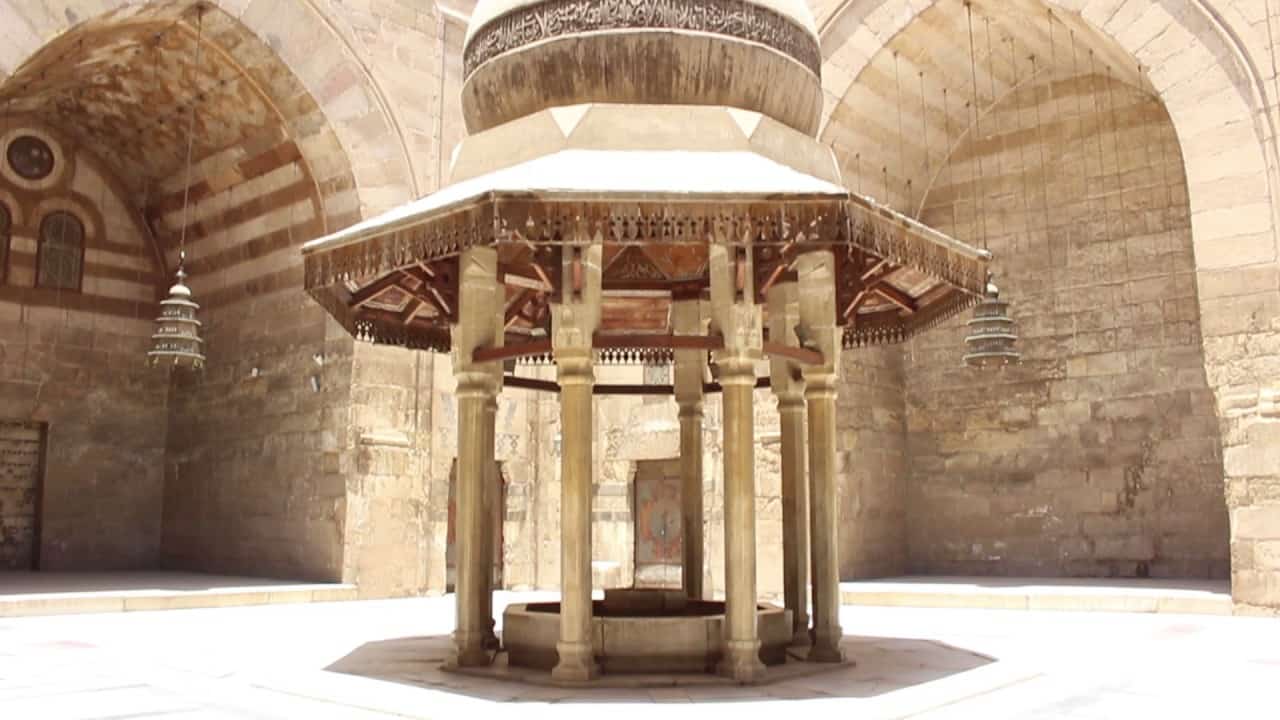
Updated On: April 18, 2024 by Yomna Salah
Have you ever heard of El Moez Street? This video features some of the most impressive landmarks on that vintage street in Cairo. Even the music has a tremendous tone that says much about Egyptian culture. There are so many mosques in El Moez Street. You may enjoy taking a stroll around the area and observing remains of the past.
The Beauty Of Cairo City
Egypt is famous for possessing more than a few historic landmarks. Cairo, in particular, has magnificent streets to wander. Some of them have been sitting there for a reasonably old time. Ancient places are great at giving you a glimpse of what has once been taking place. You get to see buildings and walls where history happened. Among those streets and places lies El Moez Street.
El Moez Street is one of the oldest districts in Cairo, known as the Islamic District. This is the same area where Khan Al Khalili takes place. It is another popular area that attracts many visitors every year.
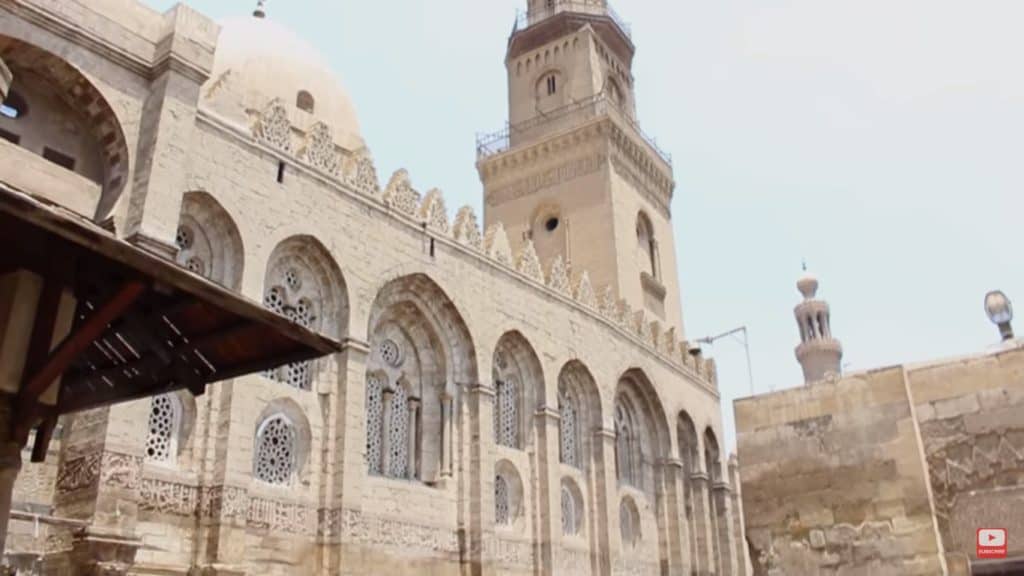
History Of El Moaz Street
As one of the oldest streets in the city, this street has witnessed many episodes since it was built. As one of Cairo’s significant landmarks, El Moez Street has many historical buildings. Most of them are mosques that came into being from ancient times. The street is named after El Moez Lidin Allah Al Fatimi. It’s easy to see why people commonly refer to it as El Moez Street: quite long and not that simple.
That magnificent street of El Moez is one kilometre long. It looks like an open-air museum with so much to behold. There are many significant mosques on El Moez Street. It also holds many medieval architectural treasures, so it is easy to anticipate many tourists passing by. Most of what you will find there belongs to the Islamic World.
Undergoing Renovations and Developments
Today, you can see a renovated version of what it used to be. Back in 1997, the whole place underwent overhauls made by the government. And by the entire place, we mean restorations of the historical buildings and pavements.
This development has helped make the place more comfortable and safer. That is because the street is open for pedestrians only from 8 in the morning until 11 at night. No heavy traffic causes a mess in the street, but cargo vehicles can pass by outside this time frame. It has been going this way since 2008, making the area as attractive and pretty as it has always been.
Popular Areas around El Moez Street
Surrounding the street are other magnificent landmarks. This includes Bab Zuweila from the south and Bab Al-Futuh from the North. The latter is the point where El Moez Street starts and goes all the way to the other end. Thus, the street is divided into the southern and the northern sections.
Popular places lie in the southern part, including the Gamaliya district that embraces the Tent Market. You can find the Ghuriya Complex before Bab Zuweila in the same section.
On the contrary, you can find Al-Hakim Mosque and the Spice Market from the north. Between those two landmarks lies Al Azhar Street, which embraces the Spice Market rather than El Moez Street. This part has several landmarks, including medieval mansions and the antique market. The Qalawun Complex and Al Aqmar Mosque are all historical buildings.
The Man Behind The Name Of The Street
We have already mentioned that the street’s full name is El Moez Lidin Allah Al Fatimi. This name belonged to a man that existed during the Fatimid dynasty. El Moez was the fourth caliph of the Fatimid dynasty. People described him as the Glorifier of the Religion of God, for he was a righteous man. He also happened to be the 14th Ismaili Imam, and his ruling lasted over two decades.
El Moez was famous for being too powerful, whereas his kingdom was dominant then. Before his reign, the dynasty centre lies in North Africa. However, he moved it from North Africa to Egypt. During this dynasty, when El Moez ruled, Cairo city came into being, becoming the new capital of the Fatimid Caliphate.
Despite being a Shia Muslim, El Moez had a high tolerance for different religions. He was very popular among people from other religious communities, including Jews and Christians. In history books, descriptions about him always included his tremendous acceptance of people’s differences, especially in religions.
Among his noteworthy achievements was the invention of the fountain pen. He was the first to devise a pen that neither stains clothes nor hands. Above and beyond, he was responsible for building several structures that we can see in the street nowadays.
The Etymology of the Name
El Moez is an Arabic name that was quite popular during Islamic times. It is still used in modern times in many Arab countries. El Moez’s full name was Abu Tamim Maad El Moez Ledin Allah Al Fatimi. Quite long, isn’t it?
However, Al Fatimi was more of a description than a last name. It is an adjective that reveals that he belonged to the Fatimid Caliphate. El Moez Street is the easiest and simplest to use for a street name. It couldn’t work any other way.
The Historic Buildings Found On El Moaz Street
History has happened all around the world. It is fantastic to learn about the places where it took place. For this one, we are pretty sure that El Moez Street embraces many events that once happened there. It is a place where history was made.
Over and over, we have mentioned that the street possesses more than a few historic buildings. Those buildings don’t all belong to the Fatimid Dynasty. Many of them belong to other eras, including Muhammed Ali Pasha’s reign, the Ayyubid dynasty, the Ottoman era, and more. You can even find many of those buildings featured in the video above.
It is time to learn about those historical structures that have stood firm until this time. Let’s start with the significant mosques on El Moez Street.
Al Azhar Mosque
Al Azhar Mosque is one of the most prominent mosques in El Moez Street and Cairo. The mosque was constructed by El Moez Ledin Allah Al Fatimi when Cairo was newly established in 970. That makes it one of the oldest mosques in Islamic history and Egypt. It was even the first one to be built in Cairo.
No wonder people call Cairo City “The City of Thousand Minarets.” It has a fair share of domed mosques around the city, in general, and in El Moez Street.
Throughout history, the mosque has gone through a lot. It was once among the congregational mosques in Egypt until some rulers shunned it and removed its congregational status. That was until the Mamluk Sultanate arrived in Egypt to reverse those processes. They even expanded the mosque and overhauled it.
The following rulers took the same steps and even financially aided to upkeep the mosque’s status. Thanks to their efforts, the Al Azhar Mosque survived. Besides, the institution of Al Azhar managed to keep up and become the most influential Islamic institution in Egypt.
Mosque of Abu Dahab
Just beside Al Azhar Mosque lies the Mosque of Abu Dahab. It is one of the famous mosques in El Moez Street. Amir Mohamed Beh Abu El Dahab was the one who ordered the construction of the mosque. During the reign of the Ottoman Empire, he was one of Egypt’s leaders.
Initially, the building was supposed to be a school that welcomes students of Al Azhar University. However, it became a mosque, one of the oldest mosques in Egypt. It was the fourth mosque in Egypt, and it had an Ottoman style of architecture.
Most of the mosques in El Moez Street have domes. This one is no exception; its dome is even semi-squared. It sits just right above the praying area. People refer to it as the hanging mosque. This is because its construction took place just above the street level.
Al Hussein Mosque
Among the famous mosques on El Moez Street is the Al Hussein Mosque. Sayedna Al Hussein is what you will hear from the locals on the streets of Egypt. The word “Sayedna” means our master; in fact, Al Hussein was the grandson of Prophet Muhammed. This mosque that sits on El Moez Street was named after him.
You may even realize that people call the surrounding area Al Hussein. Near that mosque lies Khan Al Khalili, Cairo’s most famous bazaar. Al Hussein Mosque has been around since 1154 as one of the holy sites in Cairo.
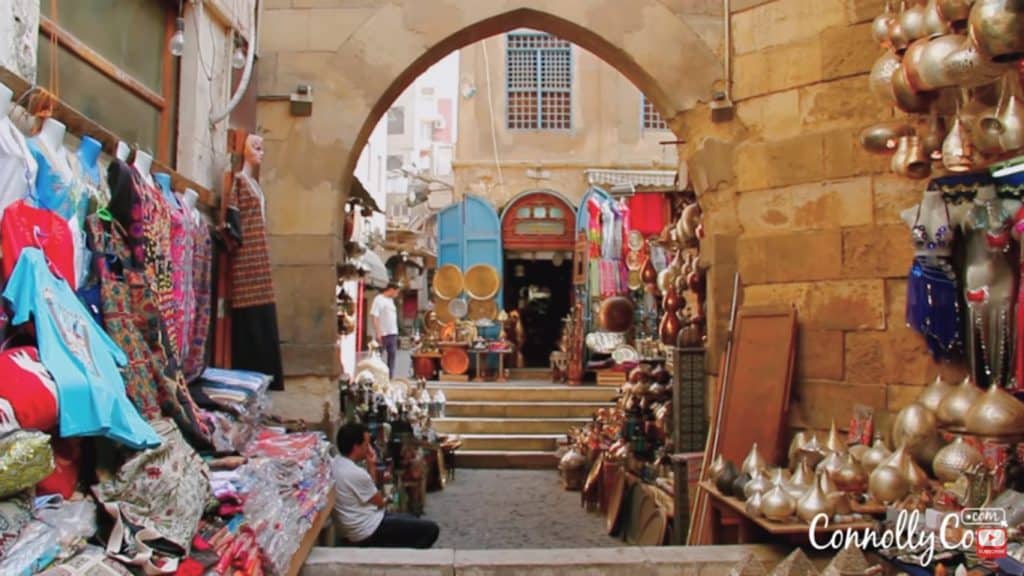
After an archaeological excavation, experts found a cemetery below the mosque. It belonged to the Fatimid Dynasty, where the caliphs of the era were buried. For some reason, some Muslims believe that the cemetery is not the only thing that exists under the mosque. They think that Al Hussien’s head lies there as well. There was no clear evidence for this claim, but they frequently mention it.
Al-Ashraf Mosque
One of the mosques on El Moez Street is the Al-Ashraf Mosque. Al-Ashraf Barsbay was the name of the guy behind that mosque. Like all the other structures, it used to serve as a mosque and a school. This mosque sits precisely at the intersection point between Jawhar Al-Qaed Street and El Moez Street.
Sultan Al-Ashraf Barsbay belonged to the Mamluk Dynasty. He constructed this structure in 826 AH, along with three other mosques. It is pretty captivating as its design consists mainly of marble and windows made of stained glass. Within the mosque, another rectangular-shaped complex has an orthogonal layout.
Al Aqmar Mosque
Among the famous mosques on El Moez Street is the Al Aqmar Mosque. People usually refer to it as the Grey Mosque. We aren’t sure why exactly they call it that, but maybe the hue of the building is a bit greyish. On the other hand, Al Aqmar is an Arabic word that means Moonlit. The story behind the name is quite mysterious as well.
This mosque is nearly as old as the street itself. It has been around since the Fatimid Dynasty. The construction occurred during the Caliphate of Imam Al Amir Bi Ahkami era. However, the builder of the structure was Al Ma’moun Al Batahi.
Truthfully, this mosque is unique in terms of decorations and design. It might as well be the only mosque in Cairo to introduce geometric patterns to design. This makes the façade quite noticeable; you cannot help but appreciate the sight. The decoration is filled with geometric carvings as well as inscriptions. Such design was never introduced in Egypt before, so it helped in making the building momentous.
Mosque-Sabil of Sulayman Agha al-Silahdar
One of the significant mosques in El Moez Street is Mosque-Sabil of Sulayman Agha al-Silahdar. This building dates back to the era of Muhammed Ali Pasha in Islamic Cairo. It is situated at the starting alley of Burjouan on El Moez Street. The opposite side of the mosque overlooks Al-Nahasin Street. It also lies in the Islamic District of Old Cairo and extends to Bab Al-Shaareya Square. People also refer to it as Mosque Sabil-Kuttab of Sulayman.
The building is adjacent to the other two structures, Sabil and Kuttab, which are essential to Islam. Sabil is an Arabic word with a Turkish derivative, sebil. It refers to a small kiosk where the passers can freely dispense water when thirsty. Most of these structures date back to the Ottoman Empire. However, it sometimes refers to small fountains whose purpose is to drink water. This one may be attached to a mosque, but Sabils are found in many areas, including city squares and crossroads.
On the other hand, Kuttab is an Arabic word that means school. This word usually refers to teaching young children reading, writing, and Islamic studies. In some rare cases, children learn other subjects besides those three main elements. The learning process usually included a Sheikh, with whom children gathered around on the ground to learn. However, this is an old method of education in Egypt and Islamic communities. It is no longer carried out.
Mosque-Madrassa of Sultan Barquq
Mosque-Madrassa of Sultan Barquq is among the magnificent mosques in El Moez Street,. The builder of this Islamic complex was Sultan al-Zahir Barquq, hence the name. He also made the complex serve a school for Islamic education. In other words, it was both a mosque and a kuttab, like most of the mosques in the same area.
The building has a dome that makes it stand out among the other structures in the area. It dates back to the Circassian Dynasty of Mamluk; it is also the first architectural facility built then.
Amir Jamal al-Din al-Ustadar Mosque
There is an endless collection of mosques in El Moez Street, all equally interesting. Amir Jamal al-Din al-Ustadar Mosque is a historic building from 1407. Amir Jamal al-Din was the mosque builder; he dedicated it to himself.
Amir Jamal al-Din happened to be one of those who served under the Burji Mamluk Sultan Al Nassir. However, he faced execution by Sultan Al-Nassir with no mourning to his career. During that time, the Sultan wanted to take this mosque down to get rid of all that was left of Amir Jamal. However, the Judge halted his attempts, refusing to erase Amir’s name.
Al Hakim Bi Amr Allah Mosque
You thought the mosques were over around the street? Well, one more prominent mosque sits on El Moez Street. Al Hakim Bi Amr Allah Mosque is among the significant mosques in El Moez Street. It is pretty noticeable that it has two minarets, each on one side of the building’s façade. Regardless of the name, Saladin was the first to use this building before it became a mosque. He used it as a prison for the Crusaders.
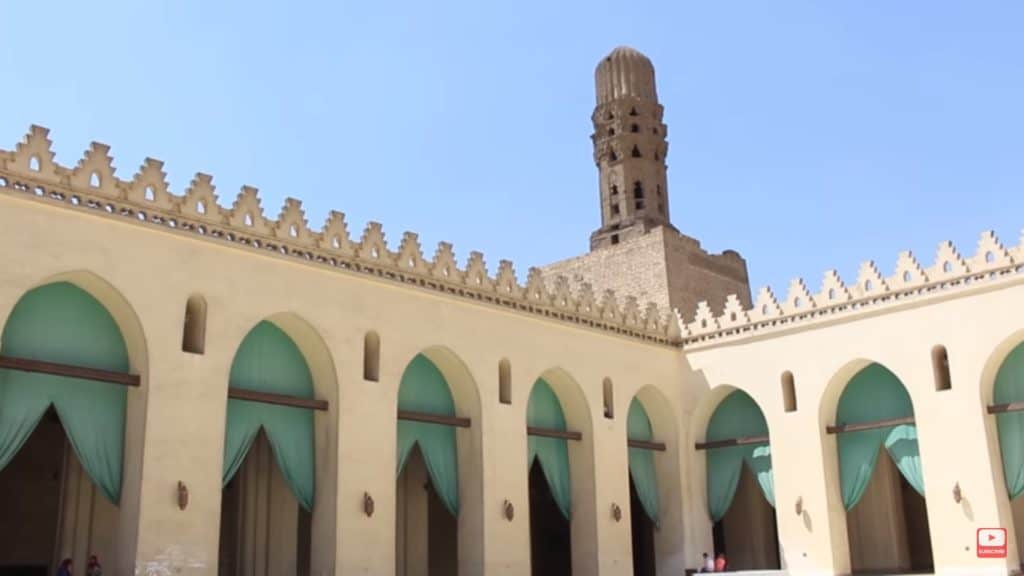
Several years after that, the building was no longer of any use. Thus, Al-Hakim turned it into a worshipping place. He was the sixth caliph of the Fatimid dynasty. People used to call him Al Anwar, meaning the well-educated or the illuminated man. After he turned the building into a mosque, it became associated with his name.
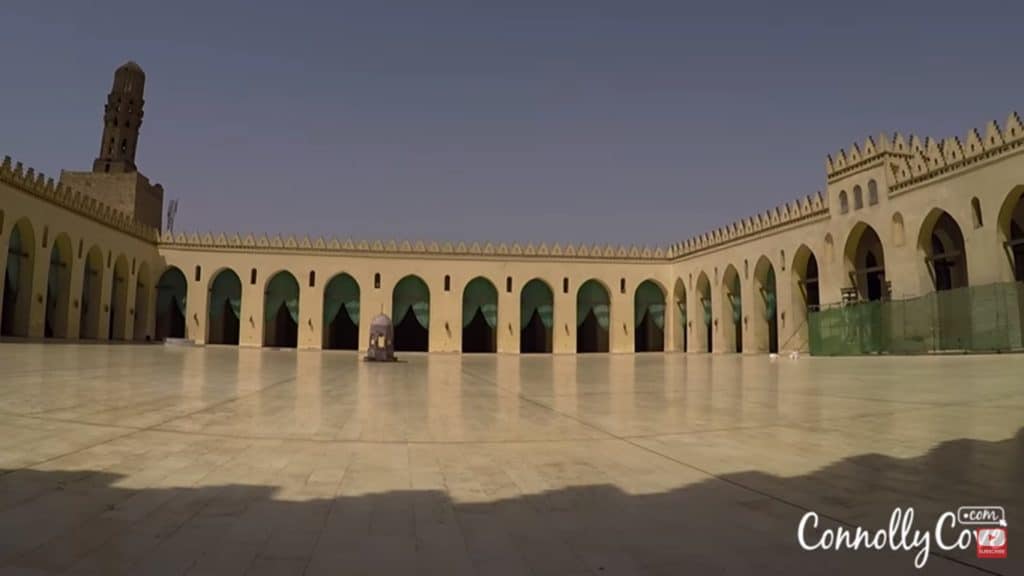
Mosque Ibn Taghri
In the Dar Al Maqasees neighbourhood, you can find Mosque Ibn Taghri. Among the significant mosques on El Moez Street is another historical complex that belongs to the Western Palace. That palace belonged to the Fatimid Caliphate Al-Aziz; he dedicated this palace to his daughter. The part of the building dedicated to the school has a rectangular shape with a relatively moderate size.
The Complex of Sultan Al-Ghuri
This vast complex has been around since the early 16th century. Sultan Qansuh Al Ghuri built it, which consists of Sabil, Kuttab, Mosque, Mausoleum, and Khanqah. That is why it is quite an enormous building. It is at the Fahhamin Quarter on El Moez Street in Old Cairo.
Wikala Al Sultan Qaitbay
The builder of this structure was Sultan Ashraf Abu Al Nasr Qaitbay. The names at those times were pretty long. The building has been around since 1481 CE, around El Moez Street in Bab Al Nasr Street. They all belong in the same Islamic District of Old Cairo.
This building was an inn where people could rest during long trips. Even the word Wikala is the Arabic version of a resort or an inn. Besides, it used to be home to the natural inhabitants of Cairo City. They used to reside there before all has changed.
On the other hand, what we see these days is quite different from how it used to look. Over the years, the structure has lost some of its architectural decoration and structure. Probably, that was because the building endured abandonment for many years. Or, it could be the other way around; it was abandoned for looking a bit in the wreckage. Either this or that, we can hardly know the reason behind the damage caused. As luck would have it, it managed to stay among the noteworthy buildings of the Islamic area.
Sabil-Kuttab of Katkhuda
Here is one more building that includes two main structures in the Islamic culture. It encompasses an elementary Quran school and a water dispenser for the public. Adjacent to this Katkhuda building is a residential wing.
This building is among the prominent structures in El Moez Street. It has been significant since its establishment in 1744 by Abd Al-Rahman Katkhuda. Today, many architects call it “The Treasure of Ottoman Architecture.”
Bayt Al Suhaymi
Bayt Al Suhaymi is a structure in El Moez Street that has stood tall since the Ottoman era. It means the House of Suhaymi, and the builder was Abdel Wahab El Tablawy. This building is a house museum that dates back to 1648 and used to have a different name.
In 1796, Sheikh Ahmed Al Suhaymi bought the museum and called it Bayt Al Suhaymi. That family owned the house for long generations, and people forgot what it was ever called.
Al Suhaymi made several renovations after buying the house. That included extending it significantly so that he mingled the structure with the surrounding houses. Now, it looks like a vast building, all made of the same unit, when, in fact, this was not how it used to be.
Qalawun Complex
Thanks to Sultan Al Nasir Muhammed Ibn Qalawun, Egypt has this exceptional structure that sturdily stands on El Moez Street. It dates back to 1280 and holds the grips of a tomb and a hospital. The building had a different name before Sultan Qalawun bought it.
Before its construction, another building, the Fatimid Palace, turned into ashes. Right after, the building that we can see now came into being. Three years after the construction, Sultan Qalawun bought it and gave it the name that has existed ever since.
Sultan Qalawun’s son, Al Nasir Muhammed, carried out several restorations when the building started to lose its brightness. Qalawun Complex is famous for being the centre for religious and ritual ceremonies.
Qasr Bashtak
Qasr is an Arabic word that means Palace. This building is known as the Palace of Bashtak. It is another historic palace that lies on El Moez Street. Besides, it is a museum as well. Mamluk Amir Bashtak was the builder of this palace; he was built in the 14th century.
The area in which the palace sits is called Bayn Al Qasrayn. This means between the two palaces; the latter refers to the Fatimid palaces that once stood there. Being too old to stand tall, the German Archaeological Institute and Constitute restored its remains in the 80’s. During these modern times, it’s one of the rare structures that have been surviving since the 14th century in Egypt.
The mosques on El Moez Street are significant and have a rich history. Watch our video of the mosques in El Moez Street.
Suppose you pay a visit to the most significant mosques in El Moez Street. Why do not you consider visiting Khan El Khalili, the top landmarks in Old Cairo, the best places in Khedivial Cairo, Al Azhar Park, Aisha Fahmy Palace, the archaeological houses in Cairo, and the best historical places in Cairo?!




